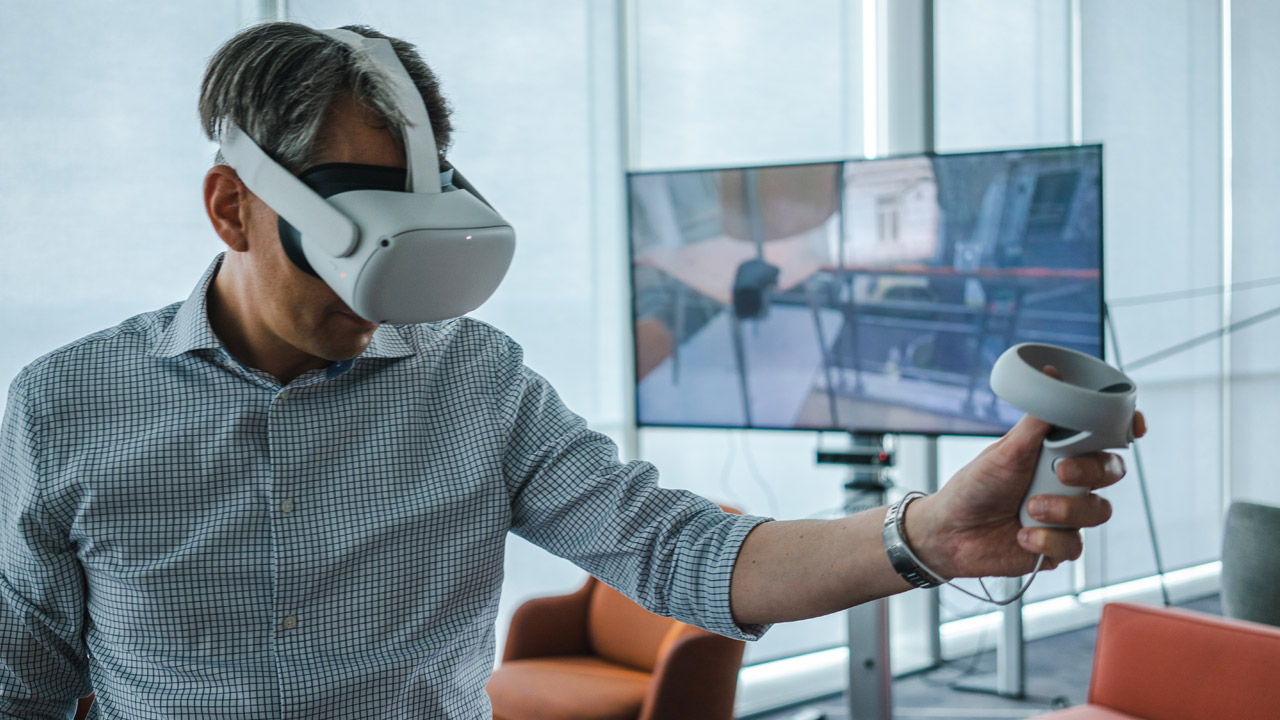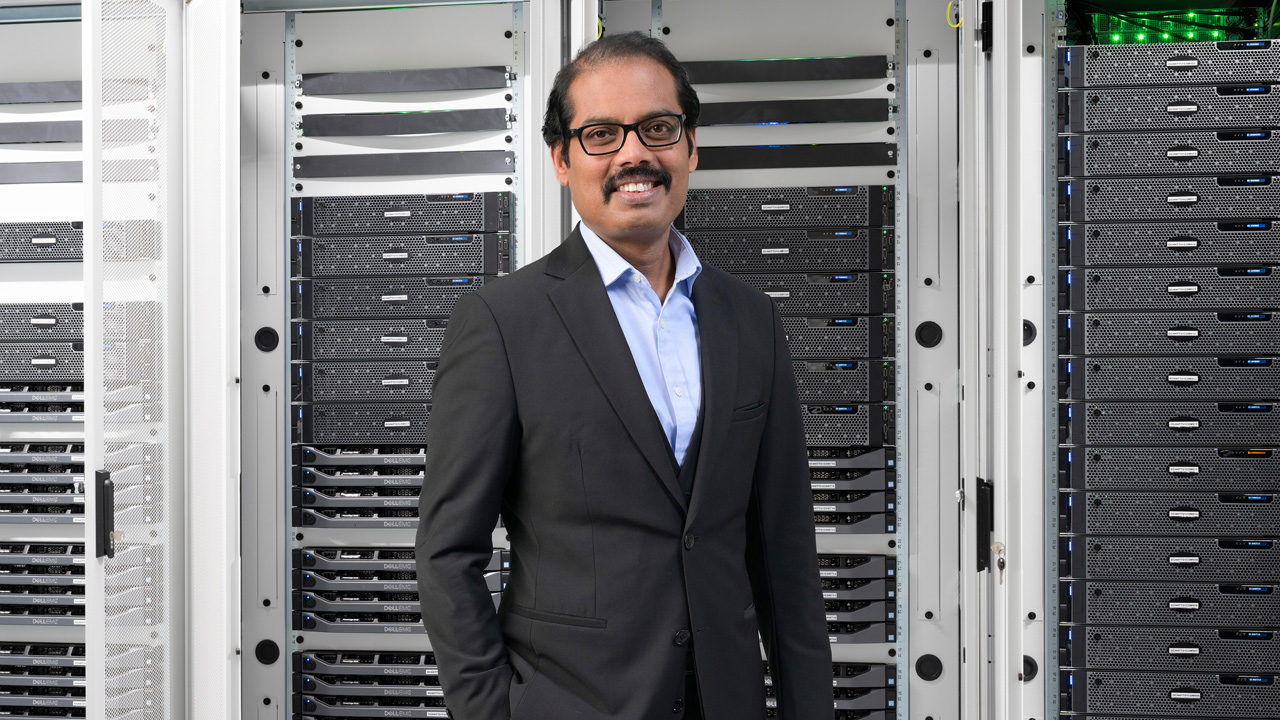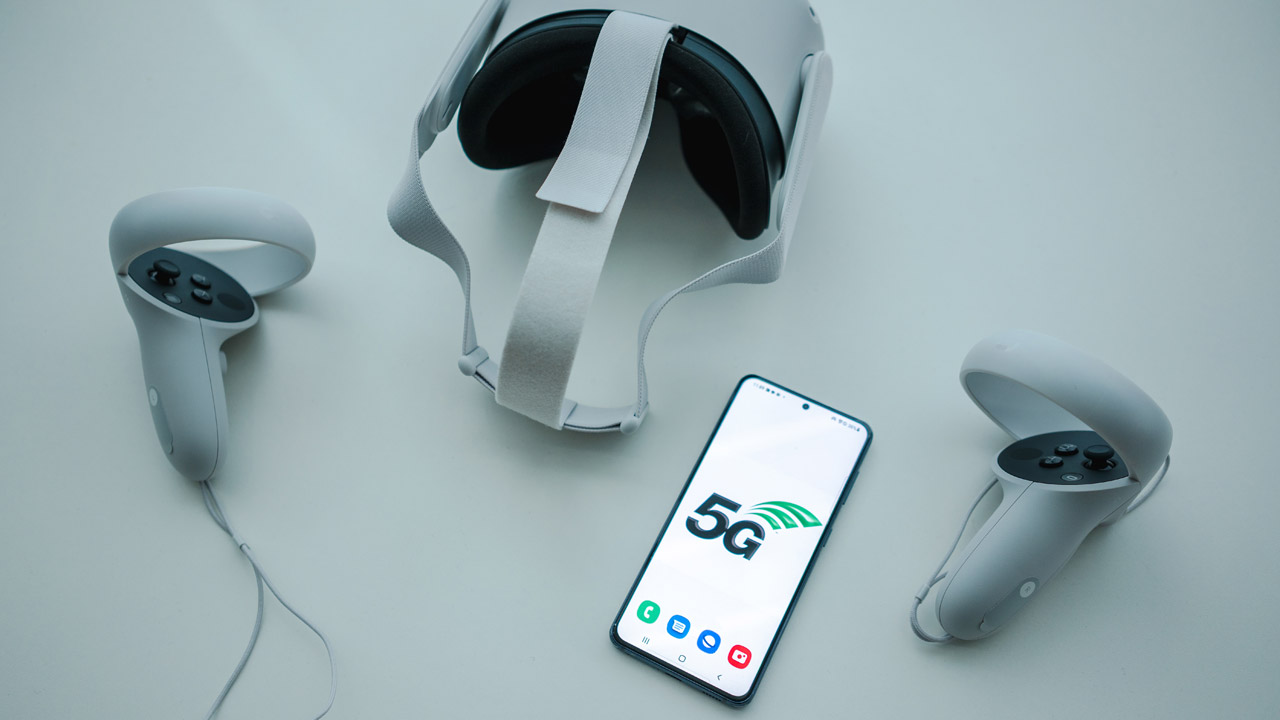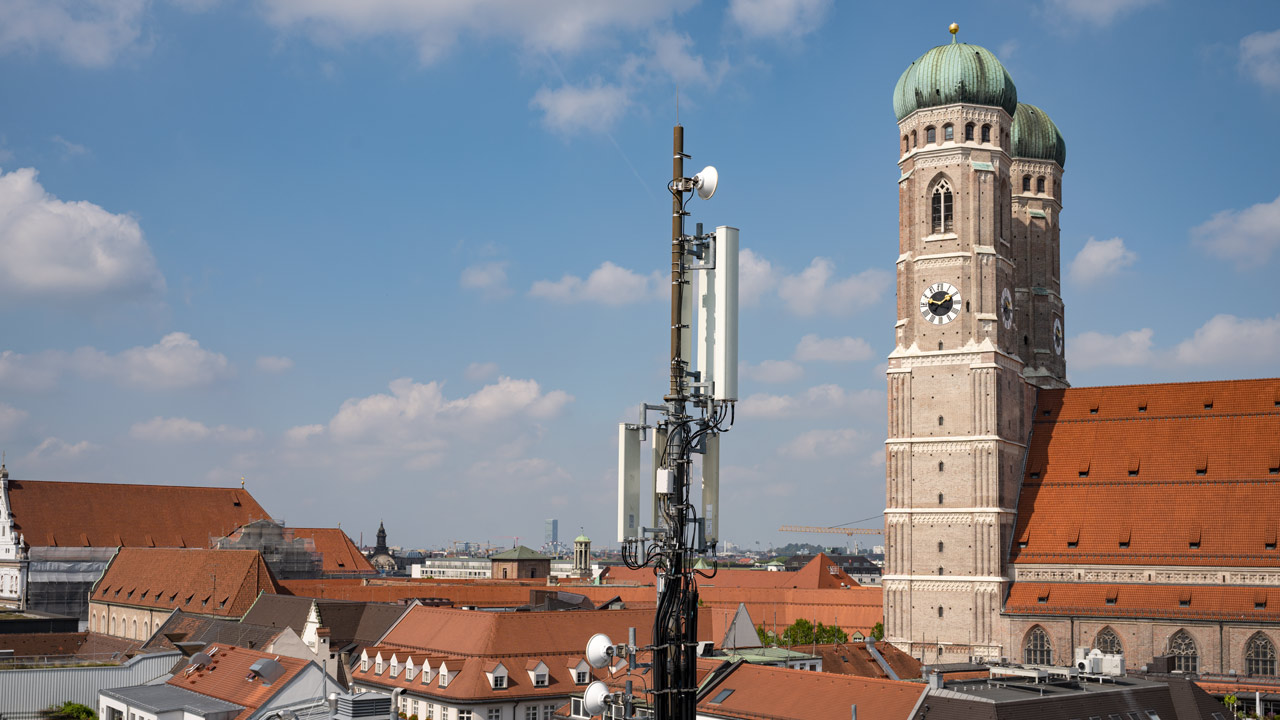28.06.2021
Virtual reality gaming in the new mobile network: Telefónica / O2 starts the future of mobile gaming via 5G

Virtual reality gaming uses VR glasses to immerse players in an interactive 3D environment in which they can look around and move freely. ()
Telefónica Deutschland / O2 starts the future of mobile gaming: for the first time, the provider has brought modern virtual reality (VR) games to life via its new O2 5G standalone live mobile network. During the premiere in Munich, O2 showed the game Half Life Alyx, which was named VR Game of the Year 2020 several times. Here, O2 is working with its partners Ericsson and NVIDIA. Compared to normal computer games, which are shown on a monitor or smartphone display, virtual reality gaming uses VR glasses to immerse players in an interactive 3D environment in which they can look around and move freely. Mobile virtual reality gaming is therefore considered a very demanding digital application that requires extremely short latencies, fast data throughput rates, and very high reliability, which de facto only 5G Standalone can offer in mobile communications. This is the final expansion stage of the mobile communications standard, in which 5G operates completely decoupled from the existing 4G standard.

Mallik Rao ()
"With our high-performance O2 5G network, we are unleashing the true potential of virtual reality and bringing gaming out of the living room and into the mobile network," said Mallik Rao, Chief Technology & Information Officer of Telefónica Deutschland / O2. "With our VR Gaming premiere, we have realized one of the most important digital applications of the future on our O2 5G standalone network. We offer gamers an exciting taste of what mobile gaming has to offer in the future. Thanks to gigabit speeds, ultra-fast response times and new networking capabilities, we are significantly expanding the playing field for digital applications with 5G Standalone."
Virtual reality gaming for the first time in the O2 5G Standalone mobile network

The extremely short response times of the 5G network are also literally "vital for survival" when fighting virtual monsters or spaceships. ()
Until now, virtual reality gaming was mainly limited to the home and a powerful fixed network connection due to the high technical requirements. Thanks to 5G Standalone, Telefónica / O2 will in future also be able to offer the gaming experience via its nationwide O2 mobile network, for example for playing together with friends in the park. Users will then also benefit from a realistic gaming experience on the mobile network: their movements in the 360-degree world will be converted by the 5G network in real time, so there will be no disruptive delays or blurred images. The extremely short response times of the 5G network are also literally "vital for survival" when fighting virtual monsters or spaceships. Because with 5G Standalone, the player is much faster at the controls than with other mobile communications standards. The O2 5G Standalone network delivered extremely short latency times of around 10-20 milliseconds at the premiere. This is once again significantly faster than the usual 20-40 milliseconds for 4G or the current 5G non-standalone network.
Deployment of mobile edge computing: data processing at the gamer's site
For the successful implementation, Telefónica Deutschland / O2 relies on a complex technology infrastructure. The 5G antennas in the O2 network at the company's location in Munich transport the signals of the VR game into the 5G core network. Here, O2 relies on the modern 5G technology of the network equipment supplier Ericsson. Telefónica / O2 has already launched its new 5G core network in several data centers, including Munich and Düsseldorf. In the future, 5G Standalone will be active nationwide in all of the provider's own data centers. The new 5G Standalone servers are already connected to 5G antennas in the O2 live network. Commercial offers for O2 customers will be provided by the company as soon as 5G Standalone brings real benefits to the mass market.
For an optimal gaming experience, Telefónica / O2 has also installed NVIDIA CloudXRTM software and RTX GPUs onto an edge computing server in its Munich 5G data center, which can run even the most demanding and graphics-intensive games in the best quality. The data for the games is obtained from the cloud server and transported to the gamer via the O2 mobile network. Thanks to the close proximity to the gamer, this ensures extremely short response times during gameplay, which is in line with Mobile Edge Computing (MEC). In order to offer all gaming fans the best possible gaming experience throughout Germany in the future, these gaming servers can be implemented in a regionally distributed manner.
"While streaming a VR game is an extremely demanding graphics application, the combination of NVIDIA RTX and CloudXR with the incredible bandwidth and minimal latency of the O2 5G Standalone network gives users an immersive experience equivalent to being tethered to a high-performance graphics computer, but with the freedom offered by lightweight, mobile VR devices", said Greg Jones, Senior Manager of Global Business Development for XR at NVIDIA.
As smartphone, O2 used a Samsung Galaxy S21 with corresponding 5G standalone software on site. The VR imagery worlds were brought to life via Oculus Quest 2 goggles.
Mobile virtual reality gaming is one of the most important 5G applications of the future
Telefónica Deutschland / O2 presented an important 5G development step with the virtual reality gaming premiere. According to the international study "5 Ways to a better 5G" by network equipment supplier Ericsson from May 2021, virtual reality cloud gaming is among the most important 5G use cases currently still in research & development - just like 3D hologram telephony or VR vehicle entertainment. On the other hand, technically simple applications such as video streaming or video phone calls can already be handled smoothly via 5G Standalone.
O2 starts 5G expansion turbo

By the end of 2021, O2 will already cover more than 30 percent of the population with 5G, and the whole of Germany by 2025. ()
O2 is starting its 5G expansion turbo this year. The provider is currently expanding its 5G network preferably on the powerful 3.6 GHz frequency in order to offer its O2 customers the highest possible speeds, very short delay times and new networking options. Currently, more than 1,500 5G antennas in over 60 cities are transmitting on this frequency. Later in the year, O2 will also roll out the 5G standard on the long-range 700 MHz frequency, as well as deploy Dynamic Spectrum Sharing (DSS) technology over 1,800 MHz, combining 4G and 5G. By the end of 2021, O2 will already cover more than 30 percent of the population with 5G, and the whole of Germany by 2025.